Thoracoscopic release, posterior instrumentation
1. Introduction
The aims of surgery are to:
- improve the spinal curve,
- improve the three dimensional alignment of the spine,
- prevent progression of the curve in the future
- improve cosmesis
- reduce pain
- optimize pulmonary function
- maintain neurological integrity.
This is achieved by correction of the deformity and creation of a solid arthrodesis of the deformed part of the spine.
To illustrate this procedure, we will use a right thoracic curve.
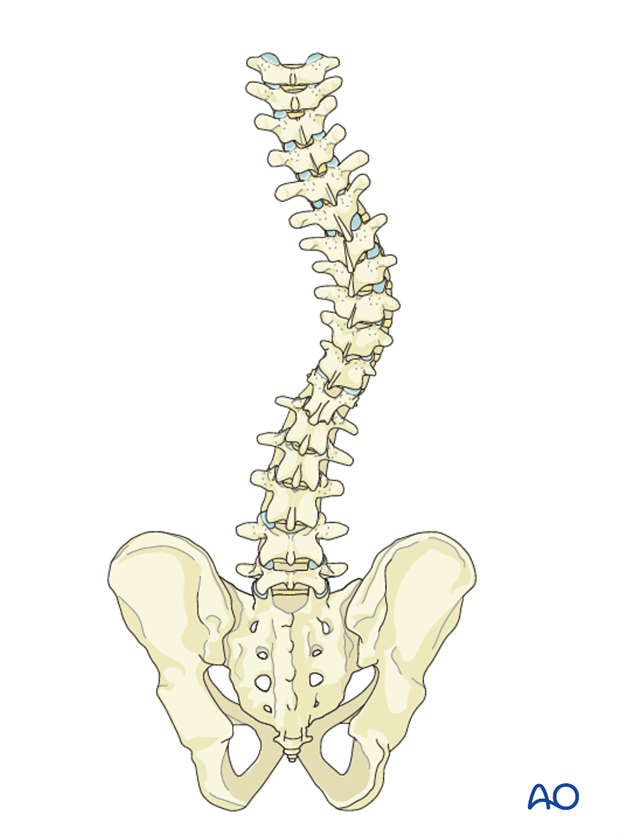
Details on selection of fusion levels can be found here.
2. Approaches
The endoscopically assisted anterior release is performed through standard portals of the anterior thoracoscopic approach with the patient in a lateral decubitus position.
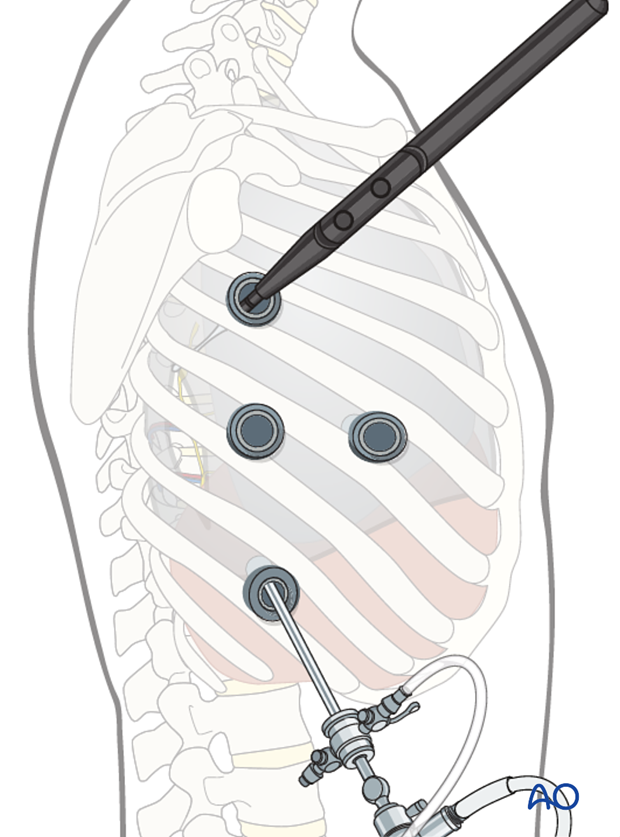
The instrumentation is performed through a posterior approach with the patient in the prone position. The lengths of the incision will depend on the levels being fused.
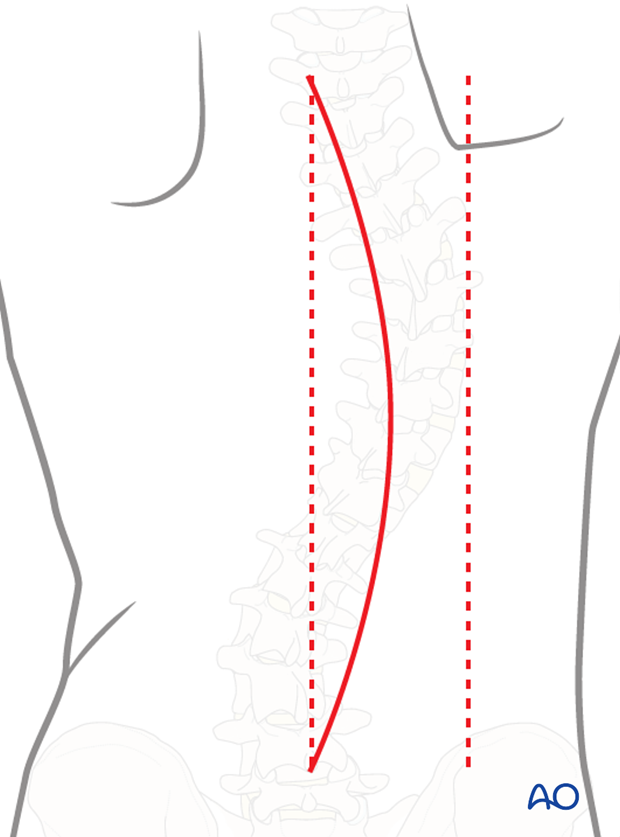
3. Anterior release
The anterior release consists of a thorough discectomy and resection of annulus of the apical intervertebral discs within the proposed instrumented area of the spine.
Generally a minimum of 3-4 apical intervertebral discs are excised.
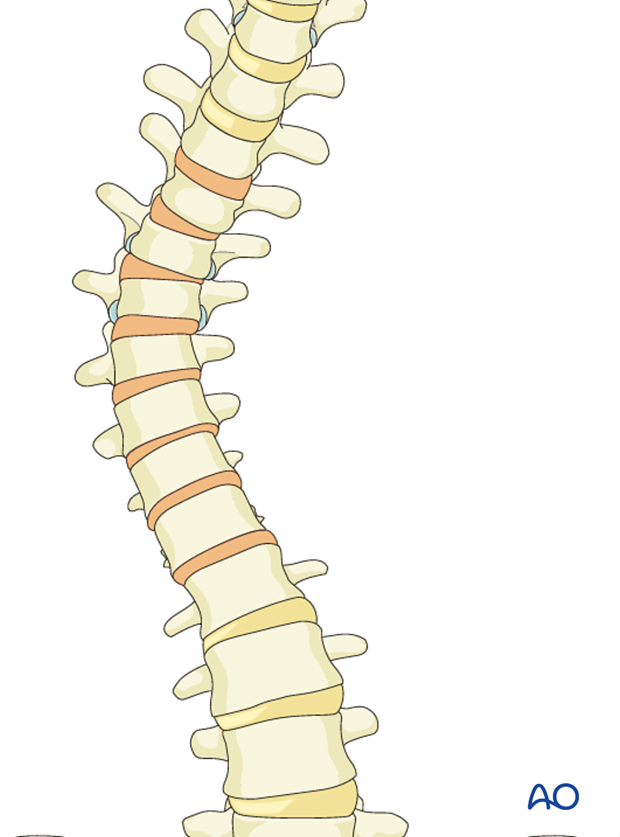
The annulus is incised from the lateral aspect of the spine with a scalpel. The disc is removed using curettes and rongeurs.
Removal of the posterior annulus is optional.
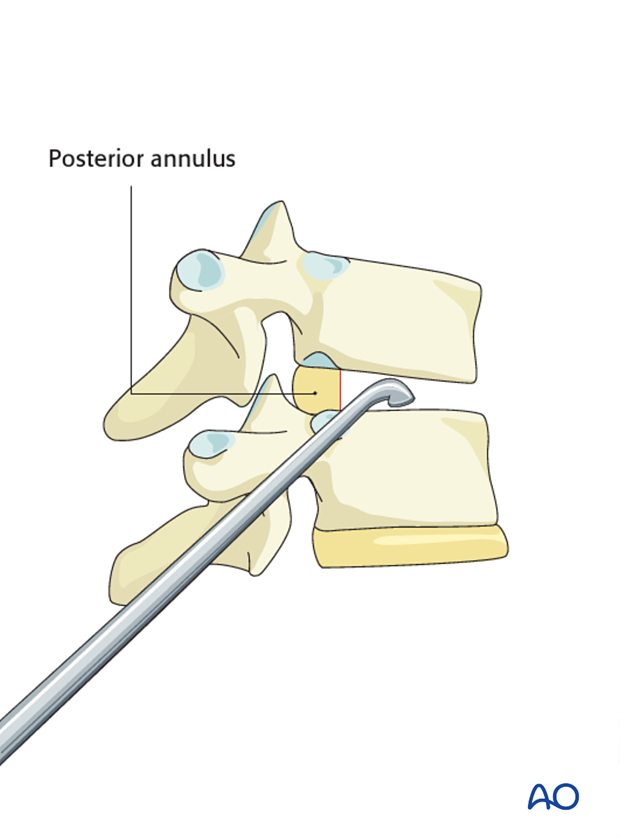
The anterior longitudinal ligament is usually not cut during this procedure and helps to protect the instruments from damaging the anterior vessels.
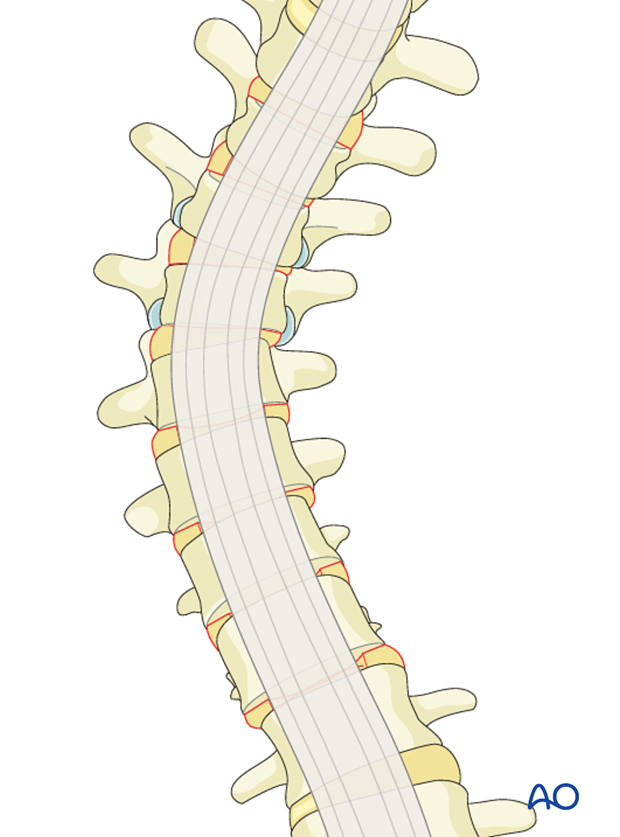
Removal of the posterior annulus
Due to limitation of visualization, care should be taken to excise the posterior annulus if deemed necessary. Excision of the rib head will further improve flexibility and aid in the exposure and excision of the posterior annulus.
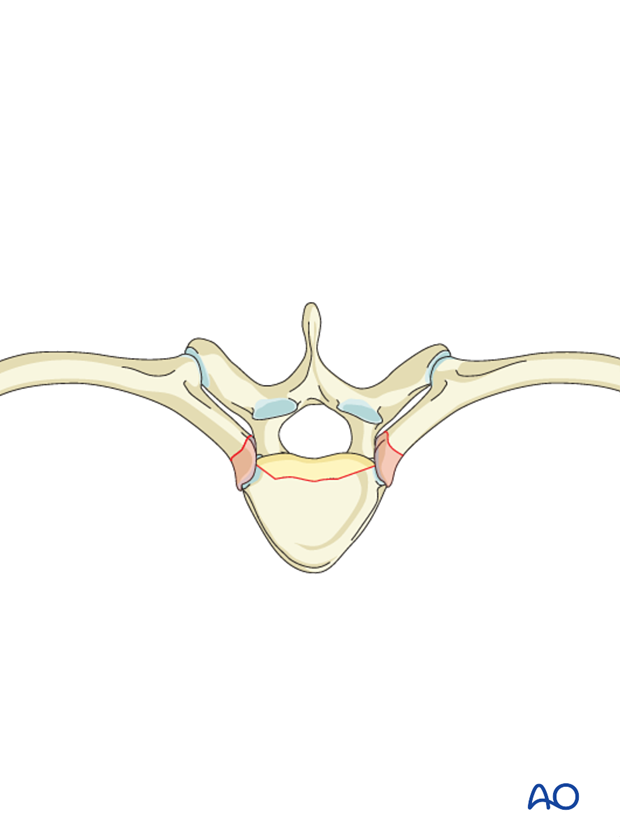
Excision of cartilaginous end plates
The cartilaginous end plate is excised using a curette, a periosteal elevator or a chisel in order to reduce the risk of pseudoarthrosis.
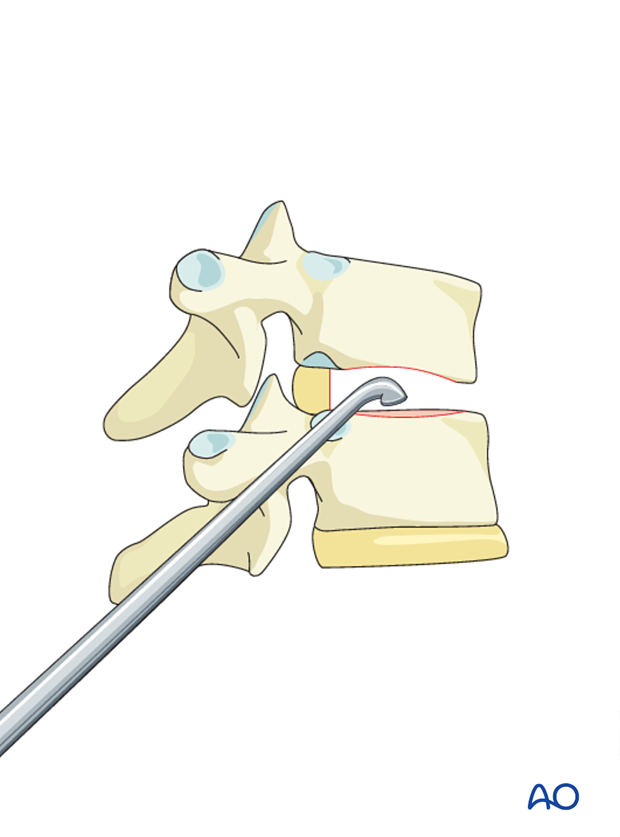
4. Arthrodesis
Morselized rib graft supplemented with bone substitutes or iliac crest bone graft is placed in the interbody spaces.

5. Posterior instrumentation
Further posterior release, facet joint fusion and instrumentation proceed according to the standard description of the posterior alone procedures.
6. Aftercare following correction of spinal deformity
Immediate postoperative medication
Intravenous antibiotics are administrated for at least 24 hours, depending on hospital protocol. The use of an epidural pain catheter vs. intravenous patient controlled analgesia (PCA) are utilized for acute pain management.
Mobilization
Early mobilization out of bed, is preferably started the day after surgery. Generally a postoperative brace/orthosis is not required.
Postoperative imaging
It is appropriate to obtain upright PA and Lateral xrays of the patient at some point early postoperative either before the patient is discharged from the hospital or at the 1st postoperative visit as an outpatient
Restriction of activities
To allow the bone to heal and form a solid arthrodesis, some restriction of sports activities, especially contact sports, is usually advised for 6 months.
Postoperative complications
Early postoperative complications include:
- Postoperative wound infection
- Urinary tract infection
- Respiratory complications such as pneumonia
Late postoperative complications include:
- Pseudarthrosis with loss of correction
- Late deep wound infections
- "Adding on" which is progression of scoliotic deformity in the non-instrumented spine.
- Crankshaft phenomenon (progression of scoliotic deformity within the instrumented spine).
- Implant failure or other implant related complications
In the long term adjacent segment degenerations above and below the instrumented spine may occur.













